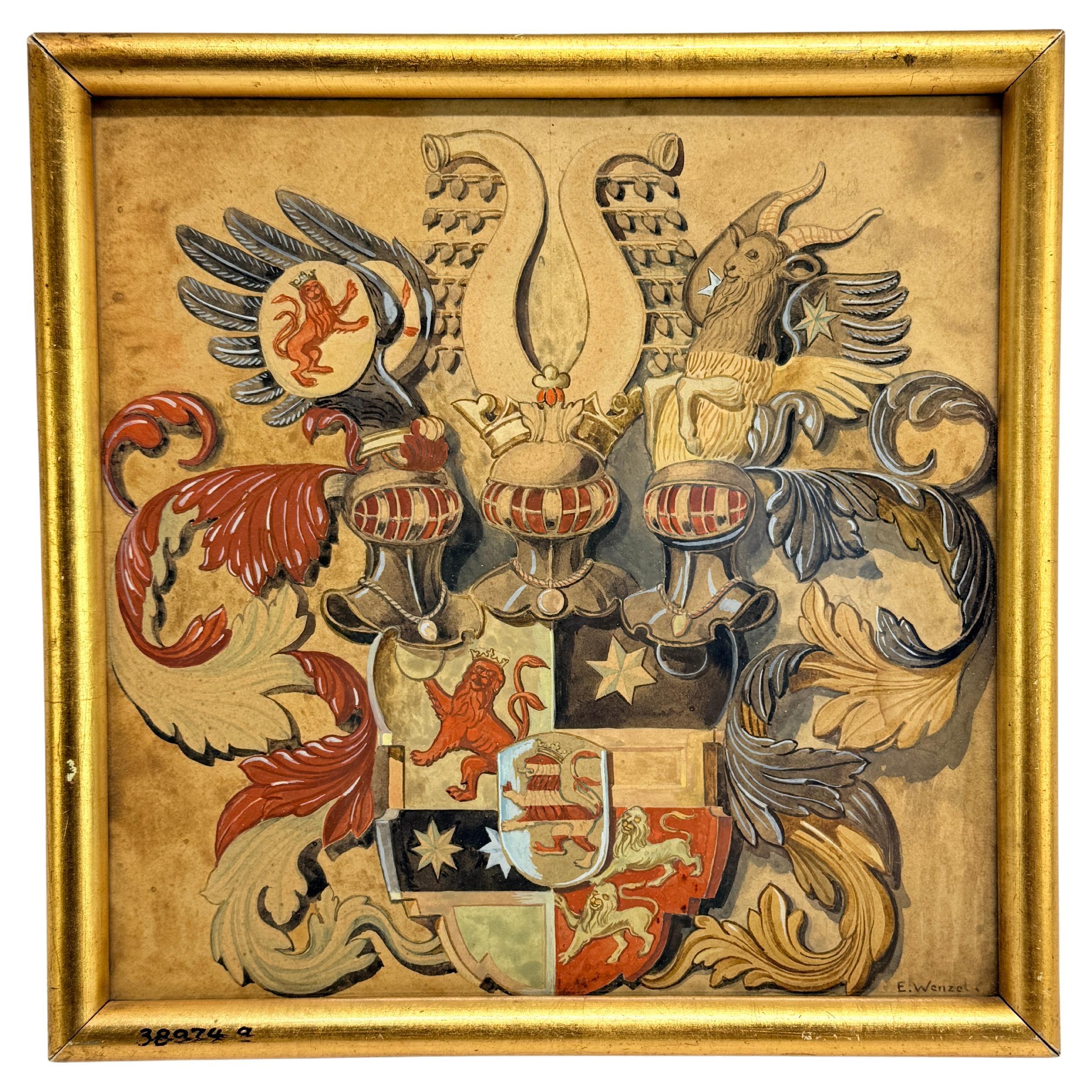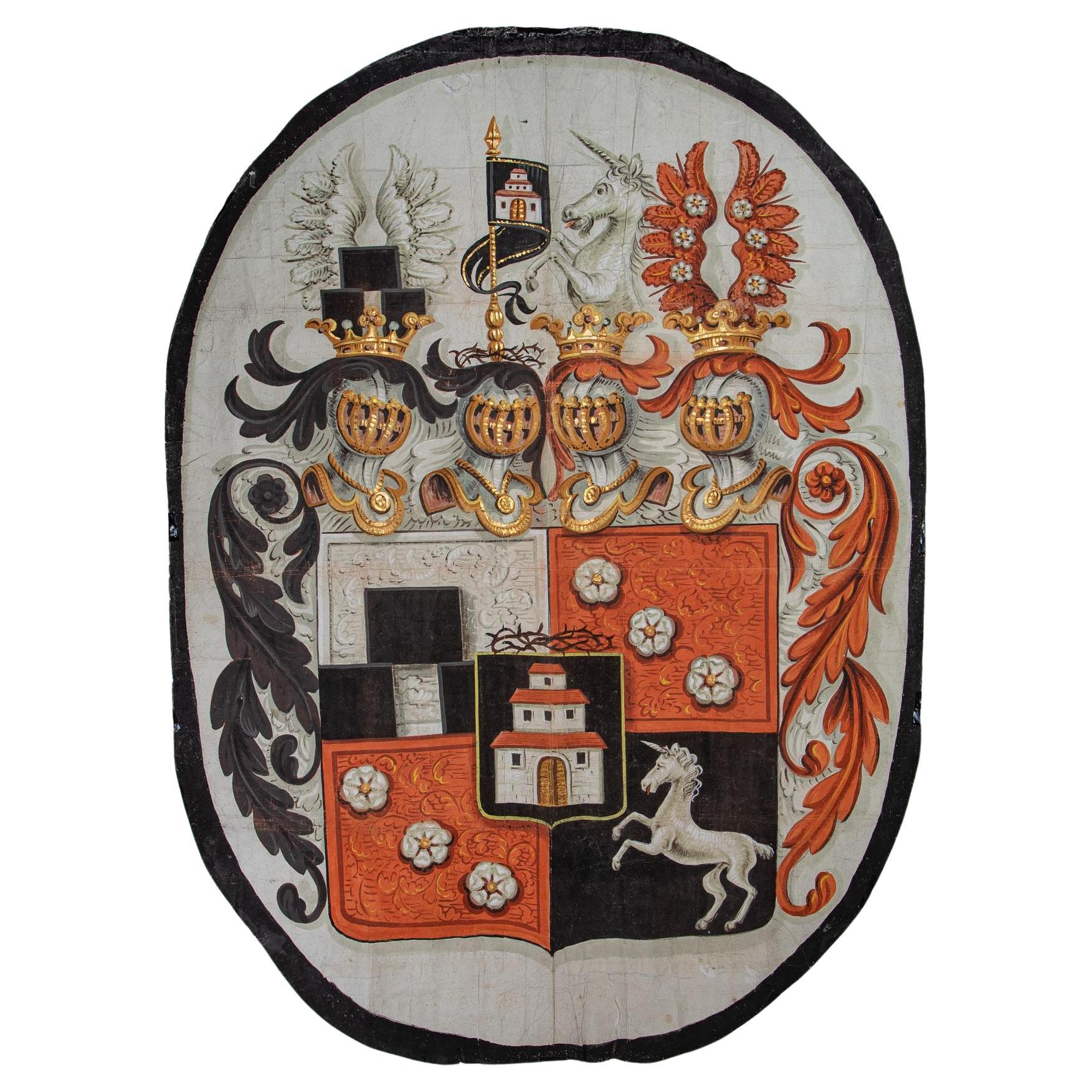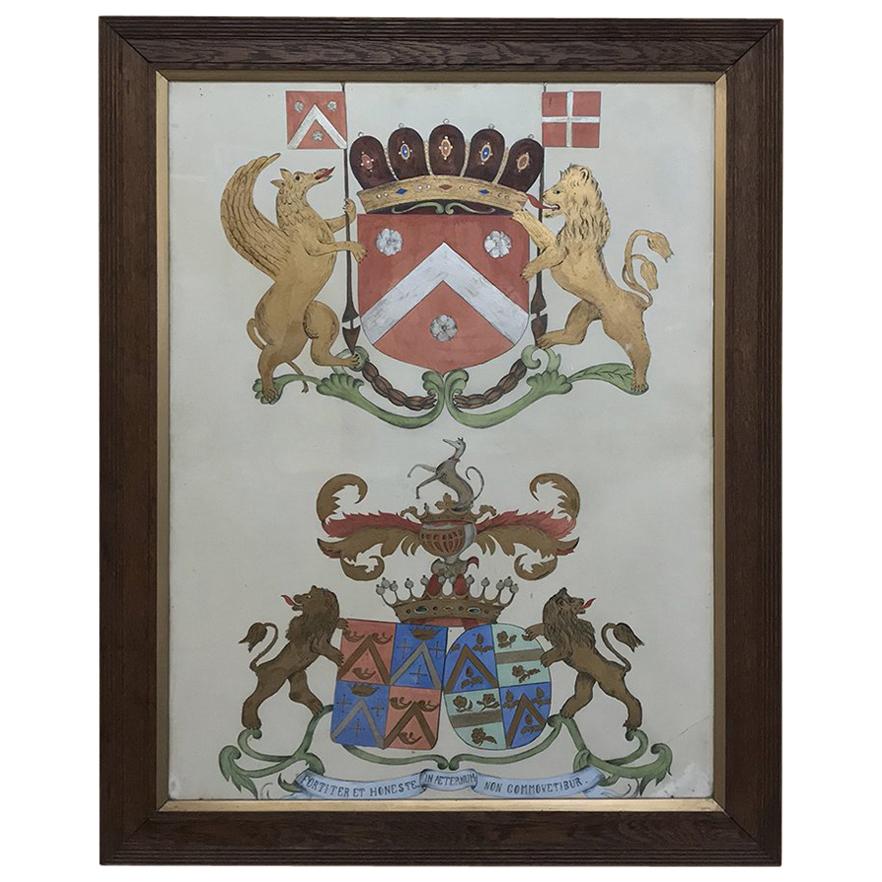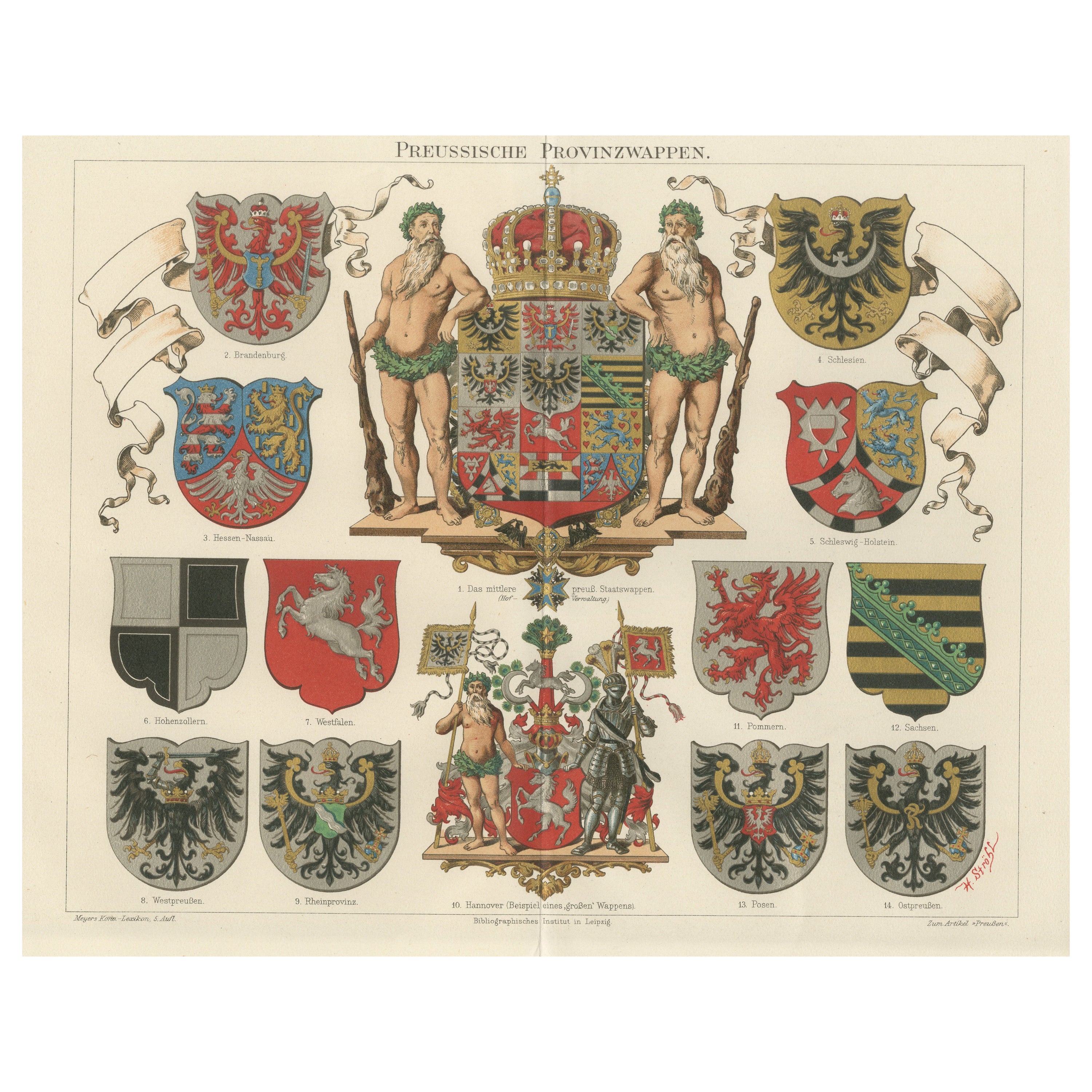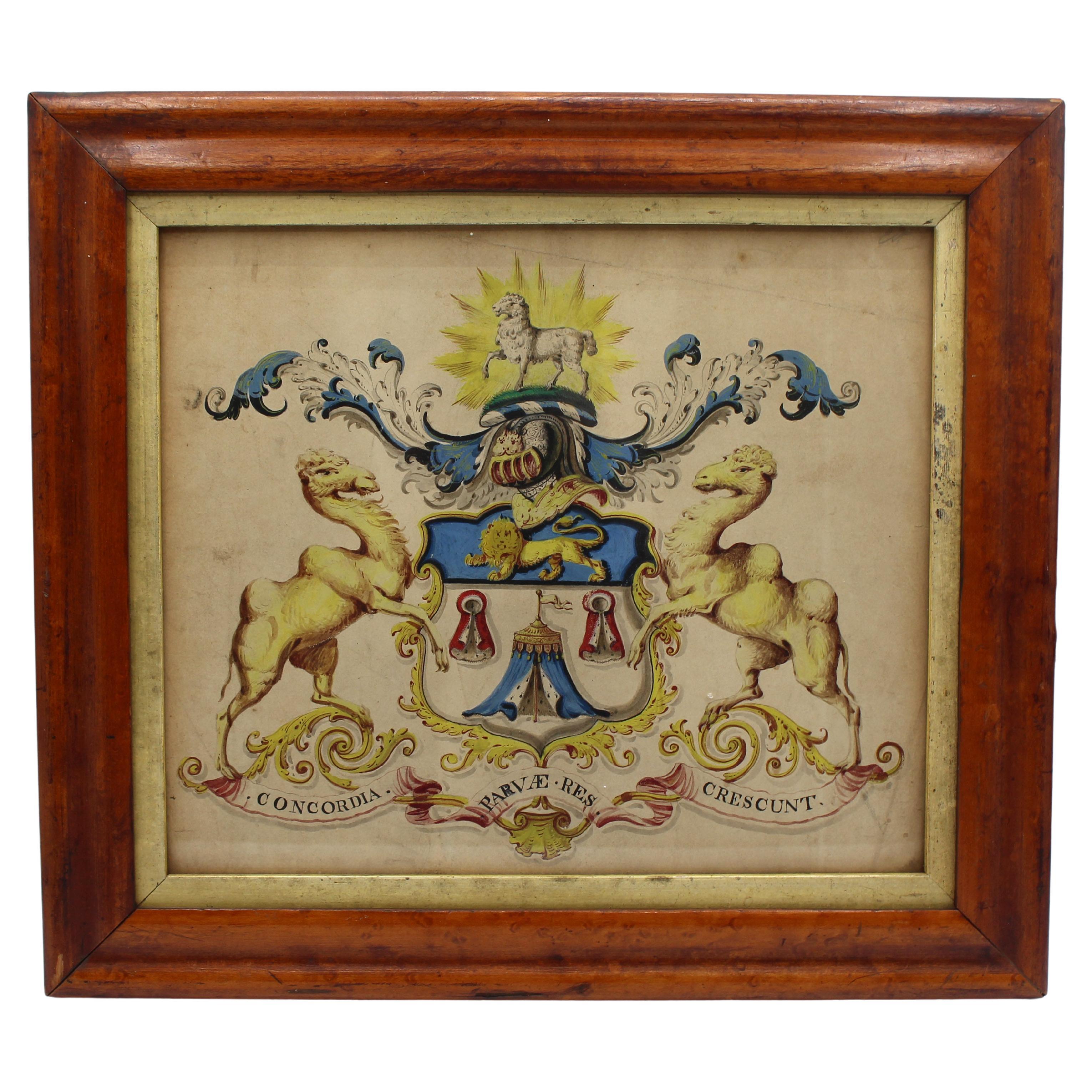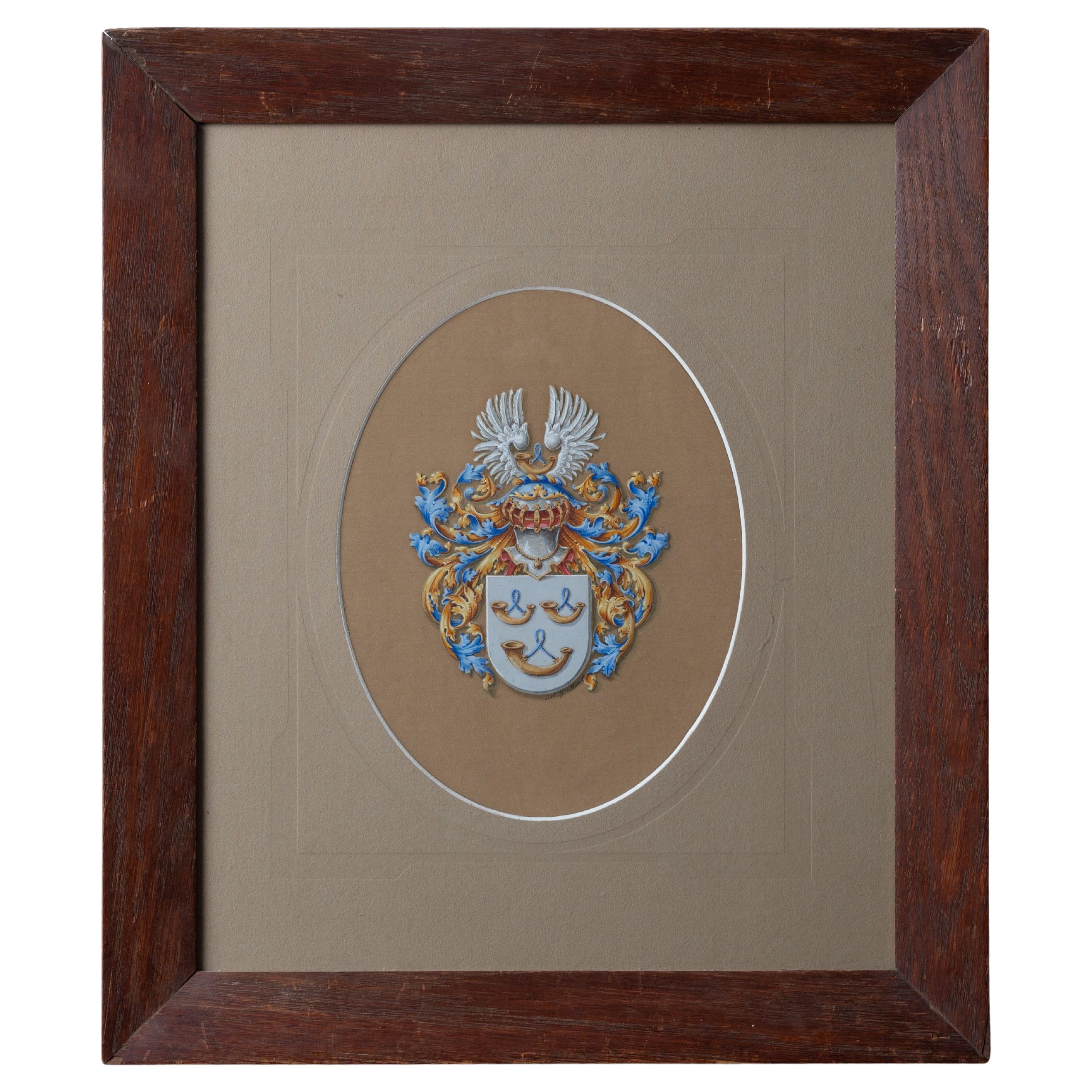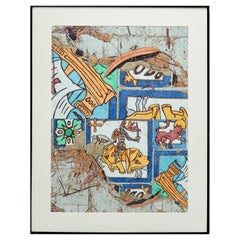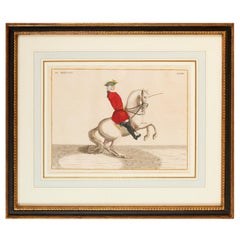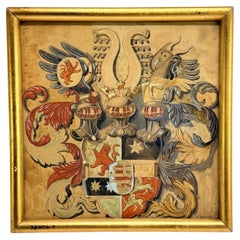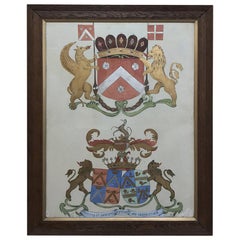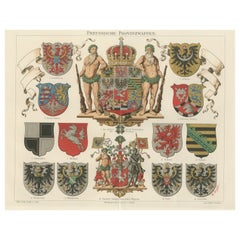Items Similar to 1792 German Heraldic Gouache, Ink and Watercolor with Imperial Inscription
Want more images or videos?
Request additional images or videos from the seller
1 of 9
1792 German Heraldic Gouache, Ink and Watercolor with Imperial Inscription
$1,375
£1,051.26
€1,210.84
CA$1,926.80
A$2,151.09
CHF 1,127.14
MX$26,331.42
NOK 14,314.66
SEK 13,496.90
DKK 9,036.62
About the Item
18th Century German Heraldic Gouache with Imperial Inscription, 1792
Signed “Herzer”, with reference to Kaiser Ferdinand II, 1623
An exquisite late 18th-century heraldic painting in gouache, ink, and watercolor on laid paper, meticulously executed in vibrant hues of red, gold, cobalt, and black. The artwork features the elaborately quartered coat of arms of the Fürsten von Salm, adorned with six crowned helmets bearing symbolic crests and flanked by swirling foliate mantling in opposing colors. The lower inscription in German references Emperor Ferdinand II and the year 1623—marking the elevation of the Salm family to Imperial princely status within the Holy Roman Empire.
The composition is signed lower right, likely by an heraldic artist with the surname of Herzer, and includes a later pencil inscription at the upper right: “To Kathy, Love Dad, 1958.” Custom framed in a gold painted wood frame.
During the 18th century, heraldic art was a specialized field, often practiced by artists affiliated with noble families or heraldic institutions. These artists were responsible for designing and illustrating coats of arms, which were significant symbols of identity and status. The absence of detailed records about many such artists is common, as their works were frequently commissioned for private use and not widely documented.
This work is signed “Herzer,” a currently unidentified heraldic painter active in the late 18th century. Stylistically, the piece aligns with the richly detailed gouache heraldry produced in the courts of the Holy Roman Empire. The composition, with its vibrant coloration, multiple crowned crests, and elaborate mantling, is reminiscent of artists such as Franz Joseph Lederer and reflects the enduring influence of Johann Siebmacher’s armorial tradition. It likely served a commemorative or legitimizing function tied to imperial titles or noble lineage.
Dimensions:
Sight: 9.5" H x 7.5" W
Frame: 11" H x 9.25" W
Condition:
Good overall. Colors are remarkably vivid. Not examined out of frame. Frame shows minor edge wear consistent with age.
Provenance:
Gifted in 1958. Property from a private New Jersey collection.
- Dimensions:Height: 11 in (27.94 cm)Width: 9.25 in (23.5 cm)Depth: 1.5 in (3.81 cm)
- Style:Neoclassical (In the Style Of)
- Materials and Techniques:
- Place of Origin:
- Period:1790-1799
- Date of Manufacture:1792
- Condition:Wear consistent with age and use.
- Seller Location:Morristown, NJ
- Reference Number:1stDibs: LU5990244442872
About the Seller
5.0
Platinum Seller
Premium sellers with a 4.7+ rating and 24-hour response times
Established in 2020
1stDibs seller since 2021
216 sales on 1stDibs
Typical response time: <1 hour
- ShippingRetrieving quote...Shipping from: Morristown, NJ
- Return Policy
Authenticity Guarantee
In the unlikely event there’s an issue with an item’s authenticity, contact us within 1 year for a full refund. DetailsMoney-Back Guarantee
If your item is not as described, is damaged in transit, or does not arrive, contact us within 7 days for a full refund. Details24-Hour Cancellation
You have a 24-hour grace period in which to reconsider your purchase, with no questions asked.Vetted Professional Sellers
Our world-class sellers must adhere to strict standards for service and quality, maintaining the integrity of our listings.Price-Match Guarantee
If you find that a seller listed the same item for a lower price elsewhere, we’ll match it.Trusted Global Delivery
Our best-in-class carrier network provides specialized shipping options worldwide, including custom delivery.More From This Seller
View All1992 Heraldic Pop Art Pen, Ink and Watercolor by Dorothy Churchill-Johnson
Located in Morristown, NJ
Dorothy Churchill-Johnson (American, 1942-2023), an untitled, pen and ink drawing with watercolor. Comprised of a number of realistic distressed tiles depicting a knight in armor on ...
Category
1990s American Modern Paintings
Materials
Plexiglass, Paint, Paper
C. 1625 After Antoine de Pluvinel, "Henry IV, Mounted", Hand Colored Engraving
Located in Morristown, NJ
Early 17th century, French hand colored equestrian engraving. After Antoine de Pluvinel (French, 1552-1620), "Henry IV, Mounted", figure 42 from "L'Instruction du Roy en l'Exercice de Monter a Cheval", c. 1625, matted and framed under UF-3 plexiglass (blocks approx. 97% of UV) , gallery label verso. Figures from this publication have sold at Christie's. Those were not hand colored.
A highly detailed engraving with the French King Henry 1V the central figure. Mounted on horseback, Le Roy (the King) is watched by no less than 10 courtiers some of whom are mounted on horseback, all of which are named in the engraving.
Antoine de Pluvinel (1552, Crest, Dauphine - 24 August 1620) was the first of the French riding masters, and has had great influence on modern dressage. He wrote L’Instruction du Roy en L'exercice de Monter à Cheval ("instruction of the King in the art of riding"), was tutor to King Louis XIII, and is credited with the invention of using two pillars, as well as using shoulder-in to increase suppleness.
In 1594, Pluvinel founded the "Academie d'Equitation" near what is now Place des Pyramides. There, the French nobility was trained not only in horsemanship, but also in all the accomplishments (dancing, fashionable dressing, etc.) It can be said that Pluvinel's influence on the aristocracy lasted from the late 16th century to the 17th century. Richelieu, the future Prime Minister of King Louis XIII attended the Academie; so did William, Duke of Cavendish.
Pluvinel's book was published posthumously by the Flemish engraver Crispijn van de Passe II and the royal valet de chambre...
Category
Antique Early 17th Century French Baroque Prints
Materials
Plexiglass, Boxwood, Paint, Paper
Baron Rais d'Eisenberg, Hand-Colored Equestrian Engraving c. 1747, "Le Brillant"
By Eisenberg
Located in Morristown, NJ
18th century German, a hand-colored engraving of a dressage horse and rider from Description du Manège Moderne by Friedrich Wilhelm, Baron Rais d' Eisenberg (German, ca. 1700-ca. 1770). Engraved by Bernard Picart (French, 1673-1733). Titled "Le Brillant", this dressage engraving is plate XXXIII. There is a gallery label verso. The print is matted and framed under UF-3 plexiglass, which offers the maximum amount of UV protection (approx. 97%).
This print was originally part of an illustrated book Baron d'Eisenberg made describing the art of the cavaliers and depicting the different breeds of horses- The full title of the book is L'Art de Monter a Cheval: ou Description du Manége Moderne, Dans sa Perfection, published in Leipzig: Arkstée et Merkus, 1747). A set of 7 framed engravings from the same book sold at Sotheby's for $9,500 (plus tax and buyers premium).
Reference:
The author, a German horseman and artist, spent some of his youth at the manège of Saxe-Weimar before entering into the service of the Emperor. He then spent six years in Naples as the Master of Horse of the Viceroy before returning to Vienna where he studied under M. de Regenthal, the imperial Master of Horse. He participated in the coronation of the Emperor Charles V at Frankfurt in 1711, then spent some time in England, but was back in Germany before 1753. He probably died in Tuscany where he was Director and Master of the Horse at the Academy in Pisa. Brunet II, 957; Mennessier de la Lance I, p. 438.
The Baron wrote several important and lavishly illustrated books on horses: his Description du manège moderne dans sa perfection, London 1727, and Dictionnaire des termes du manège moderne, 1747, being the best well-known.
He dedicated Description du Manège Moderne to King George II and to his son, His Royal Highness the Prince of Wales. Subscribers to the book included royalty and nobility from all over Europe.
The engraver was Bernard Picart, born in Paris in 1673. He gained honors at the Academy of Paris at the age of sixteen. He was a master designer and engraver and worked in Paris and Amsterdam until his death in 1733.
Dimensions:
9"h x 12"w (sight), 16.5"h x 19.25"w (frame)
Condition:
Good, some rippling to sheet, not examined out of frame.
Provenance:
Lombard Antiquarian Maps & Prints, Cape Elizabeth...
Category
Antique 1740s German Rococo Drawings
Materials
Plexiglass, Wood, Paint, Paper
1930's France, Pair of Signed Eugène Pechaubès Hand-Colored Cavalry Prints
By Eugene Pechaubes
Located in Morristown, NJ
Artist: Eugène Pechaubès (French, 1890–1967)
Titles: India – Body Guards – Officer and 1er Empire Garde Impériale – Trompette du 2e Lanciers
Medium: Offset lithographs or gravure wit...
Category
Vintage 1930s French Empire Revival Prints
Materials
Glass, Wood, Paper
Framed Antique Vellum Land Indenture, 1811, London
Located in Morristown, NJ
Vellum land indenture, 1811, London. Parties mentioned include Richard Phillip Higham, Henry Parry, and John Alliston.
The document contains two seals. The blue seal is likely a scrivener's seal. Scriveners were granted authority to draft contracts, wills, and documents similar to deeds that conveyed assets from one party to another. The red wax seal...
Category
Antique 1810s British Georgian Decorative Art
Materials
Animal Skin, Glass, Wood
19th C. American - A Framed Set of 13 Hand Colored Alphabet Woodcut Prints N-Z
Located in Morristown, NJ
A framed set of 13 pages from "The Lu Lu Alphabet", a chapbook from 1851 published by Samuel Ragnot, NYC. This set comprises the letters N through Z, each with a short rhyming descri...
Category
Antique 1850s American Victorian Prints
Materials
Glass, Wood, Paper
You May Also Like
19th C. Heraldic Watercolor of a Composite Noble Achievement, Signed E. Wenzel
Located in Atlanta, GA
A finely rendered heraldic watercolor on paper depicting an elaborate composite coat of arms, signed lower right “E. Wenzel” and likely executed in the late 19th century. The work pr...
Category
Antique 19th Century German Baroque Paintings
Materials
Giltwood, Paint
An Impressive 18th Century Painted Parchment Armorial
Located in ARMADALE, VIC
An Impressive 18th Century Painted Parchment Armorial
Height: 260cm Width: 185cm
Provenance: Private Melbourne collection.
Category
Antique 18th Century Italian Medieval Paintings
Materials
Parchment Paper
19th Century Framed Hand Painted Painting of Family Crests
Located in Dallas, TX
19th century framed painting of family crests was hand-painted in the late 19th century and framed in the 20th century. The artist used ink and wat...
Category
Antique 1880s French Renaissance Revival Paintings
Materials
Paper
Antique Chromolithograph of Prussian Coats of Arms, 1897
Located in Langweer, NL
Antique print titled 'Preussische Provinzwappen'. Original antique chromolithograph of Prussian Coats of Arms. This print originates from Vol...
Category
Antique Late 19th Century Prints
Materials
Paper
18th-19th Century Watercolor Coat of Arms of Company of Merchant Taylors
Located in Chapel Hill, NC
18th to 19th century framed watercolor Coat of Arms of the Company of Merchant Taylors of the City of York. A guild of freemen since 1273, Charles II granted them a royal charter Apr...
Category
Antique 19th Century English Baroque Paintings
Materials
Maple, Paint
$295 Sale Price
34% Off
Heraldic Coat of Arms Gouache Painting
Located in Savannah, GA
A heraldic coat of arms gouache painting, circa 1930s.
sight: 8 ½ by 11 inches
frame: 19 by 22 inches
Category
Vintage 1930s Paintings
Materials
Wood, Paper
More Ways To Browse
Imperial German
Antique Figureheads
Antique Fireplace Mantel Clocks
Antique French Roll Top Desk
Antique Gentlemans Chest
Antique Greek Pots
Antique Japanese Tea Pot
Antique Mahogany Chest Of Drawers With Mirror
Antique Mandala
Antique Pipe Stand
Antique Room Divider Antiques
Antique Settle Table
Antique Temple Jar
Antique Vanity Jars
Antique Wood Wagon
Antique Yard Long
Art Deco Coffee Cup
Bali Style
